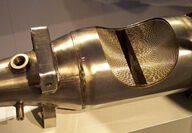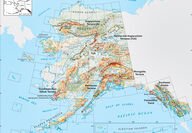Sorted by date Results 1 - 25 of 25

From jewelry at a black-tie soiree to scrubbing harmful emissions from the exhaust system of a farm truck, the six platinum group metals – platinum, palladium, rhodium, ruthenium, iridium, and osmium – are metals that are both precious and critical to the United States and Canada. Extremely rare, durable, and with a brilliance that does not tarnish, platinum and other metals in its group are a treasured choice for high-end jewelry that stands the test of time. Three of the...

The six platinum group elements – platinum, palladium, rhodium, ruthenium, iridium, and osmium – have one foot firmly planted in the realm of precious metals while the other is firmly established in the industrial sectors. While being amongst the rarest metals on the planet already makes PGE's highly valued for jewelry and bullion, their applications in the automotive, petrochemical, and electronics industries are catalysts that drive the price of these industrious pre...

As the worldwide deficit in zinc production grows, several zinc-lead mining projects across northern Canada await construction of access arteries needed to deliver their ore to market. The projects are among the world's most attractive and represent a base metals treasure trove coveted by would-be developers and end users alike. Recent funding from the Canadian government and other public and private sources could unlock the floodgates to critical infrastructure development...

The six platinum group elements – platinum, palladium, rhodium, ruthenium, iridium, and osmium – are amongst the rarest metals on Earth. This scarcity, coupled with PGEs' uses in the automotive, petrochemical and electronics industries, has this group of metals firmly planted on the United States Geological Survey's critical minerals list. "PGEs are indispensable to many industrial applications but are mined in only a few places," USGS inked in a 2017 report on platinum gro...

The six platinum group elements – platinum, palladium, rhodium, ruthenium, iridium, and osmium – are amongst the rarest metals on Earth. This scarcity, coupled with PGEs' uses in the automotive, petrochemical and electronics industries, has this group of industrious precious metals firmly planted on the United States Geological Survey's critical minerals list. "PGEs are indispensable to many industrial applications but are mined in only a few places," USGS inked in a 2017 rep...

A group of diverse global-scale mining companies hailing from Australia, Japan, and the United States are quietly exploring a relatively small region of Alaska's Interior. Two of these international players - Sumitomo Metal Mining and Newmont Mining Corp. - are seeking gold in the Pogo region of the Tintina Gold Belt. Melbourne-based MMG Ltd., on the other hand, is seeking nickel in the Wrangellia Terrane, a promising band of rocks immediately south of the legendary gold...

Nunavut seems to be ahead of the curve when it comes to recovering from the global downturn in mineral exploration spending. An estimated C$202.5 million was invested in unlocking this Canadian territory's mineral potential in 2015. This 28 percent increase over the C$158 million invested in 2014 came at a time when most jurisdictions around the world were continuing a four-year trend of sharp drops in mineral exploration. While early estimates have Nunavut giving up some...

Endowed with some of the largest undeveloped mineral belts in the world, investment in public geoscience has shown the potential of Nunavut. The 2 million square kilometers (772,000 square miles) of the territory is geologically diverse and offers the potential for many commodities, including gold, diamonds, uranium, iron, base metals, nickel and platinum, making it an attractive destination for exploration. Although many new discoveries are yet to be made, existing mineral...

Mineral exploration spending in Alaska will likely struggle to top US$80 million for 2014, a dramatic fall from the US$365.1 million pinnacle reached in 2011. "The din of mineral industry activity that is normally a part of the summer months in Alaska is decidedly muted this year as the global mining industry attempts to lift itself off the bottom of a plus-18-month-long slump," Avalon Development President Curt Freeman opined in a June column written for Mining News. Unlike 2...

Nunavut is a vast and minerals-rich swath of the Earth's crust and Nunavummiut, or the people who live there, see mining as the foundation of the territory's future. "The mining industry brings employment and career opportunities for residents of Nunavut and provides much-needed economic benefits to families where the cost of living is high," said Nunavut Minister of Economic Development and Transportation Monica Ell-Kanayuk. To create the conditions for a strong mining...

Transition Metals Corp. and Nunavut Resources Corp. Nov. 30 announced the signing of an agreement with Nunavut Tunngavik Inc. for exploration of the Arcadia Bay property, an Inuit-owned parcel on the Coronation Gulf coast in Nunavut. The property hosts Archean lode-gold style mineralization with a historical resource of 572,067 metric tons grading 9.6 grams per metric ton gold. While this resource, calculated in 1983, does not meet NI 43-101 standards, Transition considers thi...

Thanks largely to its burgeoning mining sector, Nunavut is leading the Canadian territories in economic growth. With the start-up of the Mary River iron mine late in 2014, Nunavut now has two operating mines and a number of advanced stage gold, uranium, diamond and base metals projects poised to join the ranks in the coming years. "All in all, real gross domestic product (in Nunavut) is expected to grow by 3.8 percent in 2015, the highest rate of growth among the provinces...

Transition Metals Corp. and Nunavut Resources Corp. Oct. 8 reported that new airborne geophysical data and compilation work has highlighted several high potential gold and base metal target areas within the north portion of Inuit-owned land parcel IOL CO-20, otherwise known as the North property. IOL CO-20 is located along the Izok Corridor, an infrastructure initiative proposed by MMG Ltd. consisting of a 325-kilometer (200 miles) road to a port facility on the shore of the...
Mineral exploration activity is holding its own in Nunavut this year, despite a tough funding environment and stiff competition from other attractive mining jurisdictions around the world. Although the Far North territory has only one operating mine, Meadowbank, at least eight mineral projects are currently hurtling through development and the permitting process on their way to production. Of these, two projects - one gold and one iron - have project certificates, and six projects are progressing through the environmental...
HKG: 1208 Chief Executive Officer: Andrew Michelmore Executive General Manager, Exploration: Steve Ryan Principal Geologist, Americas: Katherine Smuk Headquartered in Melbourne and listed on the Hong Kong Stock Exchange, MMG Ltd. continues to advance its Izok Corridor and Hood zinc-copper projects in Nunavut and to complete early-stage exploration at its Nikolai nickel project in Alaska. The Izok Corridor project includes the High Lake and Izok volcanogenic massive sulfide deposits. Izok has a mineral resource of 15 million...
All exploration in the Kitikmeot region of Nunavut in 2013 was carried out in search of gold and base metals. Mid-tier and major companies conducted most of the work, with mineral exploration and deposit appraisal expenditures totaling an estimated C$121 million in the northern territory's westernmost region. MMG Resources Inc. continued work at its Izok Corridor and Hood zinc-copper projects. The Izok Corridor project includes the High Lake and Izok Lake volcanogenic massive sulfide deposits. Exploration on the Izok Corridor...
Nunavut's exploration and mining opportunities consistently have attracted the attention of the major global producers. Natural Resources Canada determined that C$422 million was spent on exploring for minerals in Nunavut in 2012, and estimates that C$313 million will be spent in 2013. Exploration is underway for many minerals in Nunavut and much of the territory remains largely under-explored. These realities suggest that Nunavut's mineral production will increase substantially in the next decade. Nunavut has one operating...
There is a reason why Nunavut has one of the fastest-growing economies in Canada: mining. With one operating gold mine at Meadowbank, two huge projects on the verge of startup at Hope Bay and Mary River, five projects advancing through the environmental assessment process at Meliadine, Back River, Hackett River, and the Izok corridor as well as exploration activities continuing across all three regions of the territory in 2013, there's little wonder that Nunavut's "time has come." "Mining has the best potential to create...
An underlying motto for Nunavut this year is "Creating a Resourceful Future," a theme that can be interpreted as creating and building a future full of resources. Nunavut and its expansive geology are rich in many natural mineral resources such as gold, iron ore, base metals of lead and zinc, uranium and nickel to name a few. We have one operating mine, several properties that are potential mines under consideration, and several advanced exploration projects that are proceeding with development or feasibility work. These...
Companies chasing mineral riches in Nunavut in 2012 are expected to meet and surpass the brisk pace of exploration set a year earlier. But the race to discover major deposits of precious and base metals, along with uranium, diamonds and other commodities, in one of Canada's most underexplored and prospective jurisdictions is only just beginning. At one-fifth the size of Canada, Nunavut covers 1,994,000 square kilometers (770,000 square miles or nearly three times the size of Texas). The Far North territory is Canada's younges...
As the scope and tenor of a long-predicted shortfall in zinc supply begins to take shape, proponents of advanced mine projects in northern Canada with substantial deposits of zinc, along with lead, copper and/or other metals, are busy refining development strategies aimed at achieving production by the end of the decade. Near the front of the line are Tamerlane Ventures Inc., which is advancing the Pine Point Project in Northwest Territories, and Selwyn-Chihong Mining Ltd., which is working to develop the giant Selwyn...
Government and industry officials agree that mining exploration and development in recent years have brought substantial positive change to Nunavut, Canada's newest and least explored territory. Ongoing and new exploration, however, are rapidly advancing understanding of this vast Arctic land's mineral potential. "In this industry, it seems that all of the best and worst of times were compressed into less than two years (between 2008 and 2010)," said Peter Taptuna, minister of Economic Development & Transportation for the Gov...
Chief Executive Officer: Andrew Michelmore Executive Director: Mark Liu President, MMG Canada: Martin McFarlane The MMG group of businesses is owned by China Minmetals Non-ferrous Co., Ltd, a division of China Minmetals Corp., which is one of the largest state-owned enterprises in the People's Republic of China and ranked No. 412 on the Fortune Global 500 list in 2008. In Nunavut, MMG is exploring 2,000 square kilometers of granted tenements that surround the High Lake and Izok Lake projects early stage nickel-copper...
Chinese companies are doing their homework and investing in base metals projects in northern and western Canada to take advantage of rising prices and to secure a future supply of the minerals for their operations back home. First on the scene were private Chinese companies, Jinduicheng Molybdenum Group and Northwest Nonferrous International Investment Co. In the summer of 2008, they purchased a 100 percent interest in Yukon Zinc Corp., which owns the Wolverine Project and other mineral assets in the Finlayson District of...
No discussion of opening Canada's Far North to mineral resource development could get far without the focus turning to Nunavut, the nation's newest and least-explored territory. At one-fifth the size of Canada, Nunavut contains 1,994,000 million square kilometers, or 770,000 square miles, (nearly three times the size of Texas). Much of the territory is underlain by Archean-aged rocks similar to those found in the most productive geology in Ontario, Quebec, South Africa, Australia, and Brazil. But much of this geology is...